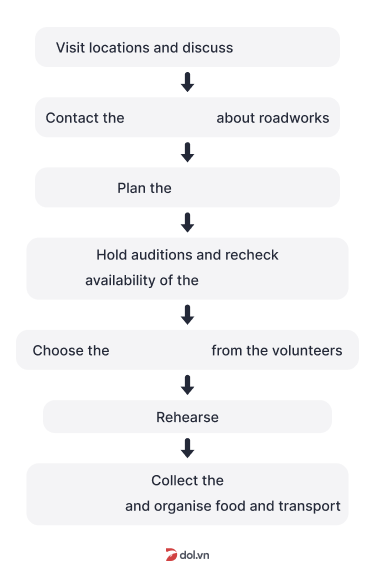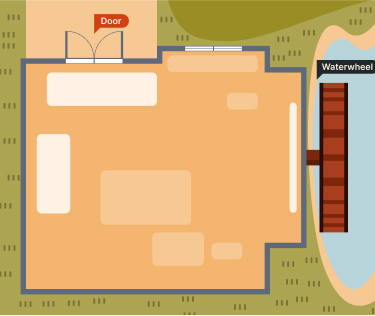IELTS Trainer - Listening Test 1 With Practice Test, Answers And Explanation
Luyện tập đề IELTS Online Test IELTS Trainer - Listening Test 1 được lấy từ cuốn sách IELTS Trainer với trải nghiệm thi IELTS trên máy và giải thích đáp án chi tiết bằng Linearthinking, kèm answer key và list từ vựng IELTS cần học trong bài đọc.
Section
👂️ Bài nghe section 1
❓ Tapescript section 1
🔥 Đáp án & giải thích section 1
Giải thích chi tiết
 Mình cần biết ngày bắt đầu của kì nghỉ (Holiday begins on ... )
Mình cần biết ngày bắt đầu của kì nghỉ (Holiday begins on ... )
=> Đáp án sẽ có sau ''What are the dates?'' (hỏi về ngày tháng)
 Mình nghe được là ''It starts on the 17th of April and it finishes on the 27th.''
Mình nghe được là ''It starts on the 17th of April and it finishes on the 27th.''
=> Nó bắt đầu vào 17 tháng Tư và kết thúc vào ngày 27.
 Sau đó cô ấy có nhắc tới một ngày nữa, ''I can't leave work before the 10th of April.''
Sau đó cô ấy có nhắc tới một ngày nữa, ''I can't leave work before the 10th of April.''
=> Cô ấy phải làm tới 10 tháng Tư
=> Loại 10th of April 
=> Đáp án là 17 April
=> Đáp án là 17 April 
Section
👂️ Bài nghe section 2
❓ Tapescript section 2
🔥 Đáp án & giải thích section 2
Giải thích chi tiết
Mình cần biết vị trí của market
=> Đáp án sẽ có sau ''Well, most of us buy our food in supermarkets these days but we're very lucky having a wonderful market here.''
 Đầu tiên, ''It was originally on the piece of land in front of the cathedral''
Đầu tiên, ''It was originally on the piece of land in front of the cathedral''
=> Vị trí ban đầu của chợ là ở trước, không phải bên cạnh cathedral; ngoài ra mình cần biết vị trí hiện tại của chợ
=> Loại đáp án B 
 Thứ hai, ''but at the beginning of the twentieth century it was moved to a site by the river.''
Thứ hai, ''but at the beginning of the twentieth century it was moved to a site by the river.''
=> Đúng là lần này market nằm gần river nhưng đây là vị trí cũ, ở thế kỷ 20
=> Loại đáp án C 
 Cuối cùng, ''When the new shopping centre was built in the 1960s, it found a home beneath the multi-storey car park where it still is''
Cuối cùng, ''When the new shopping centre was built in the 1960s, it found a home beneath the multi-storey car park where it still is''
Section
👂️ Bài nghe section 3


❓ Tapescript section 3
🔥 Đáp án & giải thích section 3
Giải thích chi tiết
 Việc đầu tiên là đi thăm địa điểm quay (Visit locations and discuss ....)
Việc đầu tiên là đi thăm địa điểm quay (Visit locations and discuss ....)
=> Đáp án sẽ có sau ''So do you think we should go to all the locations with you?''
 Sau đó, mình nghe được là ''We need to talk about the levels of background noise so we know they're all going to be reasonable places to film.''
Sau đó, mình nghe được là ''We need to talk about the levels of background noise so we know they're all going to be reasonable places to film.''
=> Khi đến thăm địa điểm quay, họ sẽ phải bàn về mức độ tiếng ồn (discuss đồng nghĩa với talk about)
=> Đáp án là C 
Section
👂️ Bài nghe section 4
❓ Tapescript section 4
🔥 Đáp án & giải thích section 4
Giải thích chi tiết
 Mình cần nghe về một nơi ở khác của red-backed spider (even on island in middle of .... )
Mình cần nghe về một nơi ở khác của red-backed spider (even on island in middle of .... )
=> Đáp án sẽ có sau ''For example, the Australian red-backed spider ...''
 Ngoài New Zealand và Japan, người nói còn bảo một nơi ở khác là ''It's also been found on Tristan da Cunha, which is a remote island thousands of miles from anywhere, way out in the middle of the Atlantic.''
Ngoài New Zealand và Japan, người nói còn bảo một nơi ở khác là ''It's also been found on Tristan da Cunha, which is a remote island thousands of miles from anywhere, way out in the middle of the Atlantic.''
=> Nó đã được tìm thấy trên một hòn đảo nằm giữa biển Thái Bình Dương.
=> Đáp án là (the) Atlantic (Ocean) 


